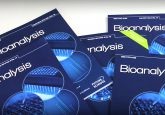The ‘blended’ bioanalytical laboratory: the marriage of antibody- and instrument-based methods and expertise

“The industry laboratory that can flexibly resource both exposure and response assessments utilizing diverse tool kits will be well positioned to provide differentiated portfolio support.”
In a recent Interview published in Bioanalysis, Bowsher recognized, among other topics, the growing relevance of ‘merged‘ analytical platforms in the contemporary pharmaceutical laboratory, specifically referencing the growing interdisciplinary connections between ligand-binding assays (LBA) and instrument-based analytics such as MS [1]. As a research director supporting the development and application of quantitative PK and PD (or biomarker) assays, I strongly concur with this perspective and have likewise seen significant, and beneficial, evolution of the ‘blended‘ toolkit in applied pharmaceutical bioanalysis. Among the drivers for this evolution is the growth of multicomponent therapeutics, such as antibody–drug conjugates (ADC), and differentiated analytical approaches that combine unique benefits associated with antibody-based assays and quantitative instrumentation. Given the impact of this reality on the bioanalytical workforce of the future, it is worthy to share a brief perspective on the context and opportunities associated with ‘blended‘ analytics, whether literally a characteristic of a laboratory‘s analytical infrastructure or as reflected in the subject matter expertise of its practitioners.
Click here to view the full article.





